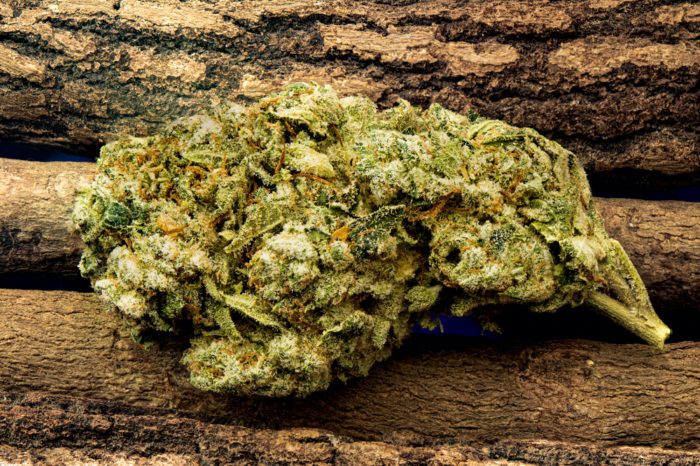Vape pens saturate the market, but not every choice is good for your health.
Many people choose vape pens as a healthier alternative to joints or bongs for smoking their medicine. While it may appear a healthier option in theory, there are several things to look out for when it comes to purchasing a vape pen. Between temperature control, battery voltage, and the materials used by the manufacturer, there are several things that every prospective buyer should be aware of. This is no small matter: your health may depend on it. Long-term exposure to the wrong compounds from cheap vape pens could create health risks. So let’s nerd out on the science to keep your consumption method safe.
Precision Temperature Control
Some vape pens provide you with the opportunity to set the temperature, while others don’t. The deal with temperature is that the higher it is, the more carcinogens you inhale. The ability to precisely set the temperature allows you to ensure you’re inhaling less of the potentially problematic compounds. When it comes to vaping cannabis oil, the temperature range of interest stems from 280°F – 400°F.
Temperature control also gives you the ability to target different terpenes that are specific to your symptoms. This is an easy way to personalize your medical cannabis experience.
If you purchase a vape pen without temperature control, then you’re leaving your health entirely up to the manufacturer. And this is crucial because, as we’ll see, the materials used within the vape pen can become dangerous when exposed to higher temperatures.

Battery Voltage
People choose to vape as they consider the smoke-free experience a healthier alternative. But cheaper devices on the market may in fact burn the oil, which compromises your health.
Battery voltage is one important consideration when it comes to controlling your vape temperatures. Modern vape pens generally come with either a 3.3V or 5V battery. A higher voltage means increased temperatures, and it’s those higher temperatures that can lead to the presence of the cancer-causing compound formaldehyde.
In 2015, a study was carried out to detect the presence of formaldehyde in vape pens. The cancer-causing compound was not detected in vape pens with a 3.3V battery, due to the lower coil temperature. However, this was not the case with a 5V battery. The study also highlighted the potential barriers for educating people on these dangers, as there are no immediate signs of exposure to compounds like formaldehyde and hence no instinctive triggering of the senses against these dangers.
One final conclusion from the study was to avoid long draws at high temperatures as the coil becomes very hot, furthering burning the oil.
What Materials to Avoid in Vape Pens
Most experts generally agree it’s best to go with high-quality titanium for a vape pen. Grade 1 and grade 2 are acceptable. However, these are expensive, and many manufacturers are known to cut corners in an attempt to save on costs. They end up using titanium alloys, or in the worst of cases, an entirely different metal. Heating certain metals and inhaling the vapor can be detrimental to health over time, especially in the lungs.
If a vape pen manufacturer claims to be using pure titanium, then be aware that pure titanium atomizers will only work with sub-ohm batteries. Therefore, be wary of any manufacturer using a standard battery in what they say is a titanium vape pen. If you can’t find the information online, then it’s worth giving the manufacturer a call or email. After all, there’s no cutting corners on your health.

Is Teflon Dangerous in Vape Pens?
Many vape pen manufacturers use Teflon as a coating on their products to provide that non-stick property that many find appealing. However, the downside of Teflon quickly becomes apparent once it’s heated. A condition known as Teflon Flu can arise when polymer fumes are inhaled as a result of heating.
After news of this came to light, many brands have removed the use of Teflon from their products. However, it’s always advisable to check if the manufacturer of your vape pen has used Teflon, and if so, avoid it. Moreover, if you have old vape pens, check the materials. Dispose of any with poor quality metal or Teflon.
The Best Atomizer Material in Vape Pens
Manufacturers make vape pen atomizers from a variety of materials. Examples include ceramic, copper, quartz, and titanium, along with associated alloys.
Each has slightly different characteristics. Quartz is considered to generally deliver the smoothest taste, while ceramic, although quite safe, doesn’t yield the same potency in dose. Titanium, on the other hand, is known to provide both excellent taste and potency (just remember that you need a sub-ohm battery for this).
Avoid copper. Heated copper can result in a condition known as metal fume fever. Some cheaper vape pens use copper atomizers and purposely burn the oil to create bigger vape clouds. Vape clouds appeal to those with a shallow understanding of the underlying benefits of medicating with cannabis, and offer aesthetic benefits but not much more. Questionable manufacturers play upon using unsafe methods without proper care and attention to production side effects. These manufacturers will bank on the trend towards big smoke clouds, regardless of the costs to health.

Oil Consistency for Vape Pens
The best vape pen in the world isn’t much use without some good oil to vape. Ideally, you want an oil that’s neither too thick nor too thin. When the oil is too thick, then it likely contains chlorophyll and waxes that are best avoided. Too thin, and it may contain some synthetic chemicals added for flavor, such as propylene glycol. And based on one scientific study, where this chemical was found to “have unsuspected effects on the expression of circadian molecular clock genes”, this is perhaps something best avoided. For healthiest results, go with an oil with the consistency of honey.
The Takeaways
To sum it up, avoid Teflon and avoid dealing with any manufacturer who refuses to provide you with details of the metal composition of their vape pens. Your health depends upon it. Always go with grade 1 and 2 titanium over other alloys or metals, and demand the safest products from your vendor. Avoid plastics at all costs – no one needs the chemical leaching, and all of its associated dangers.
It’s in everyone’s interest that the cannabis industry is not allowed to make the same mistakes that big tobacco made. Together as responsible consumers, we can steer the market in a positive direction much faster than any government. We just need to stay informed and up to date with the latest science.





